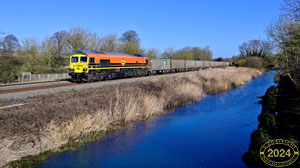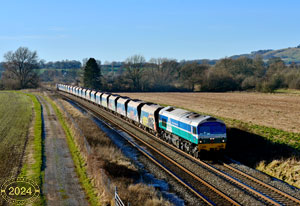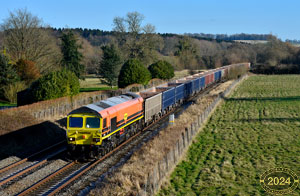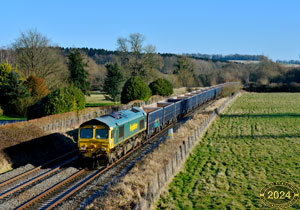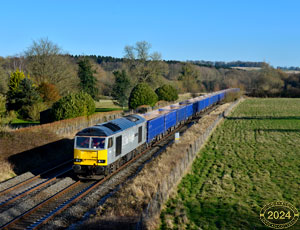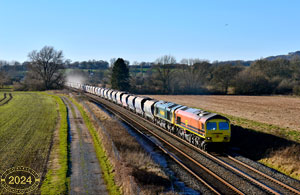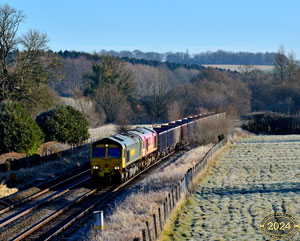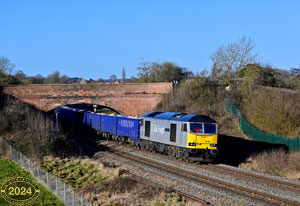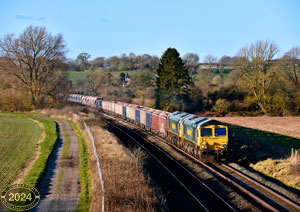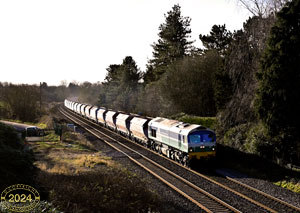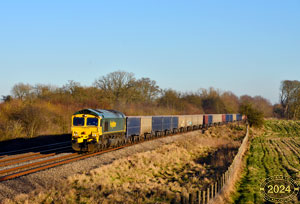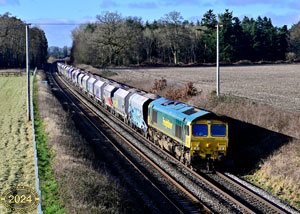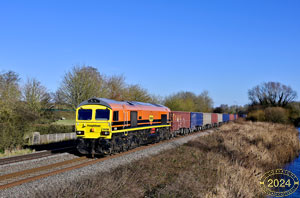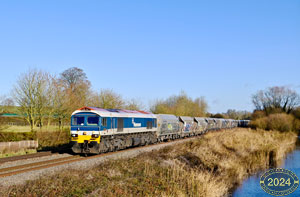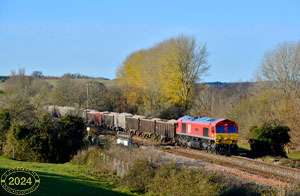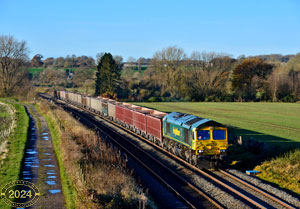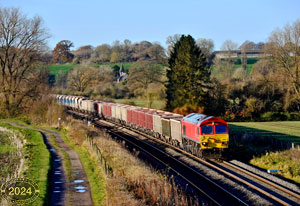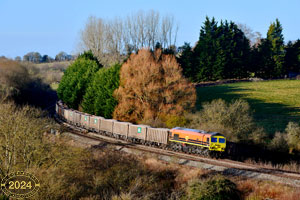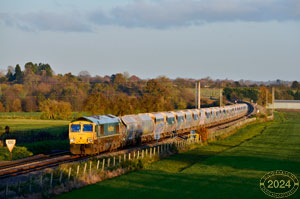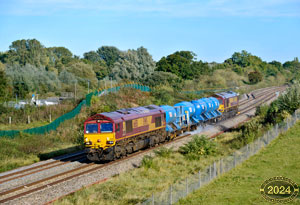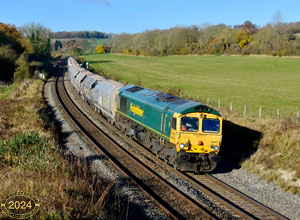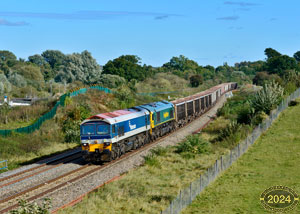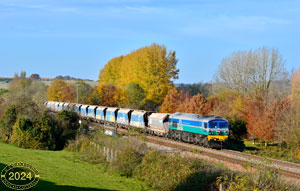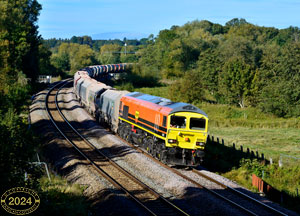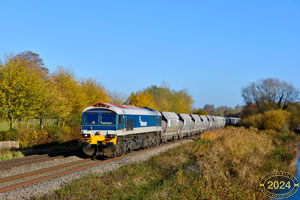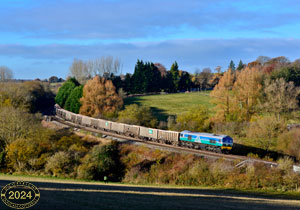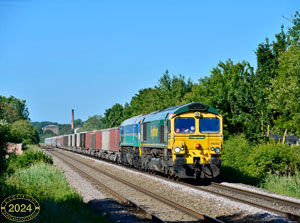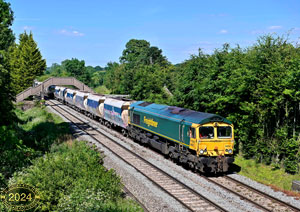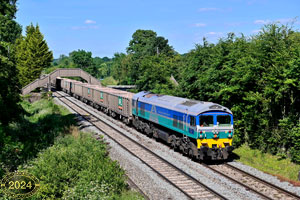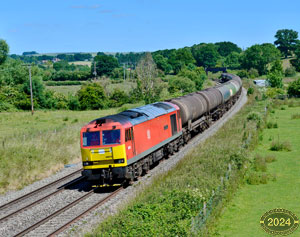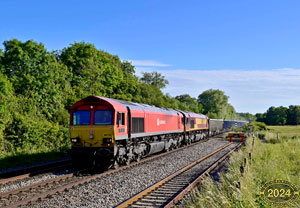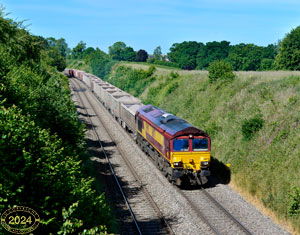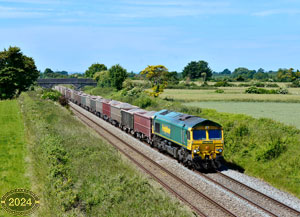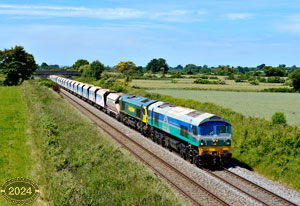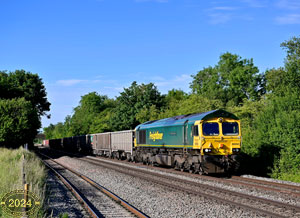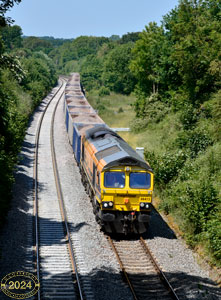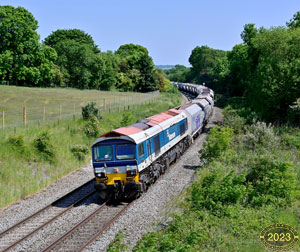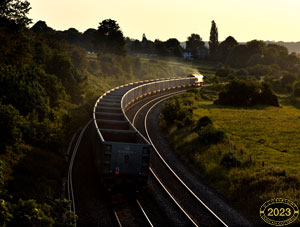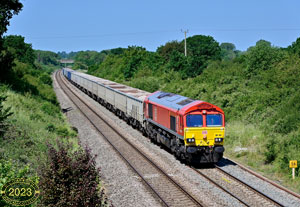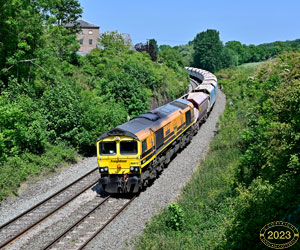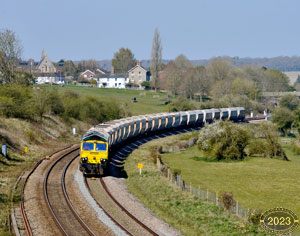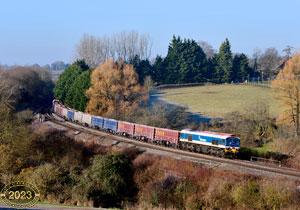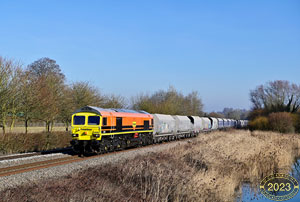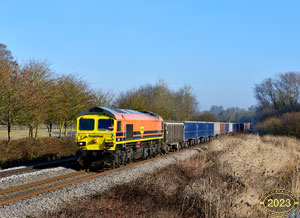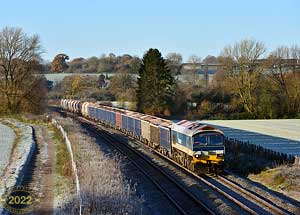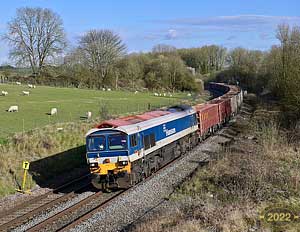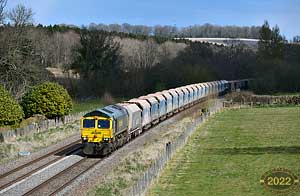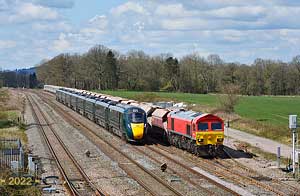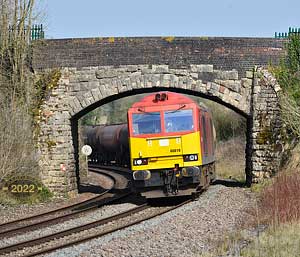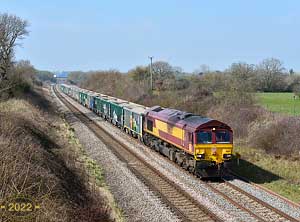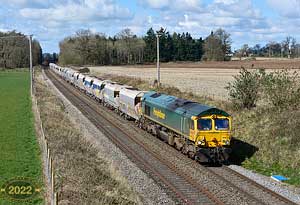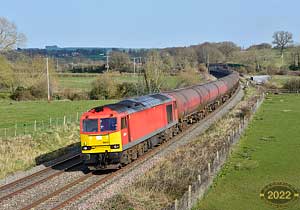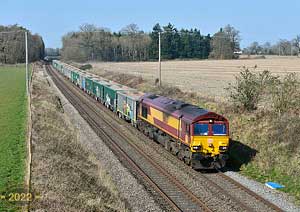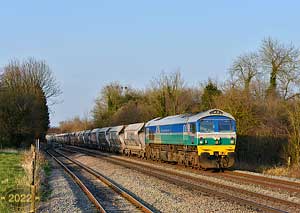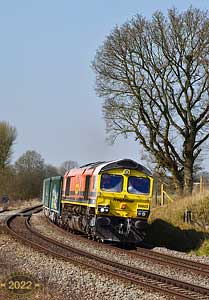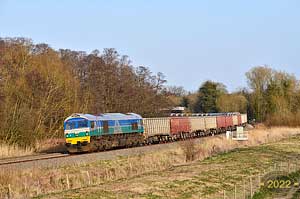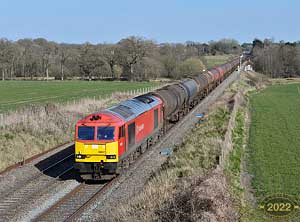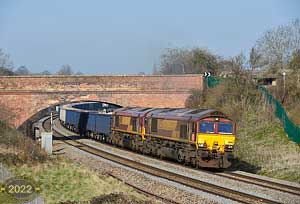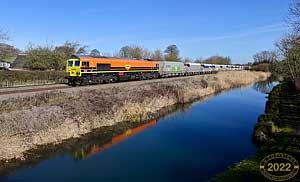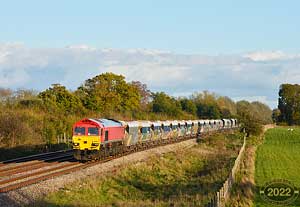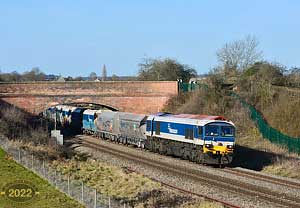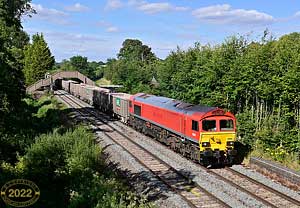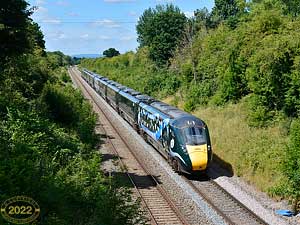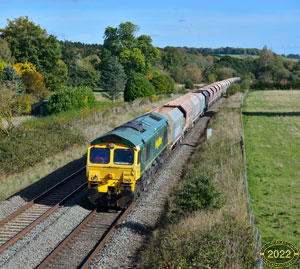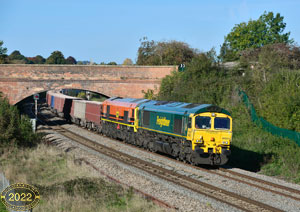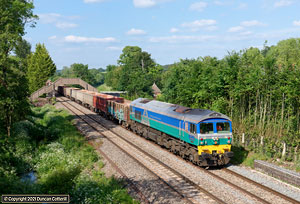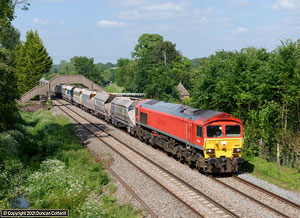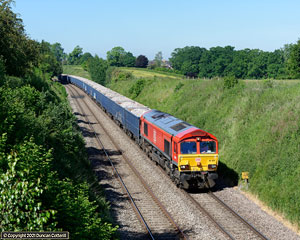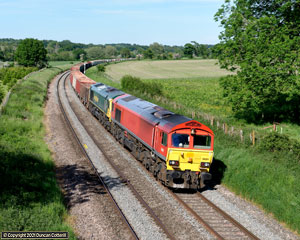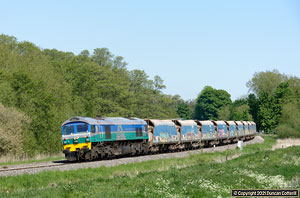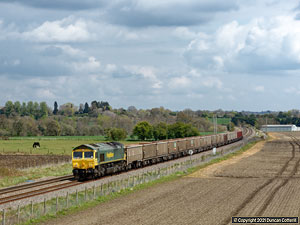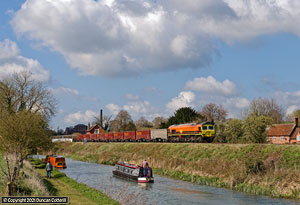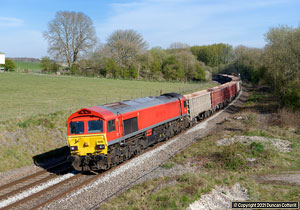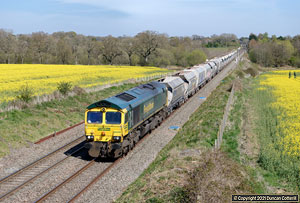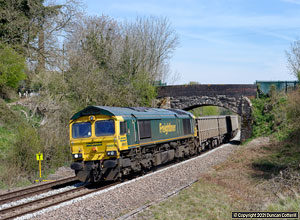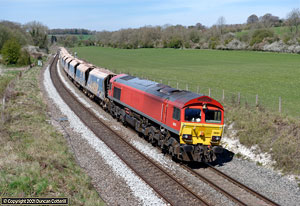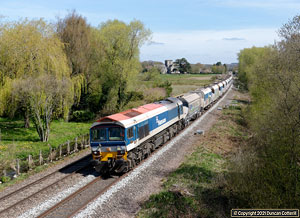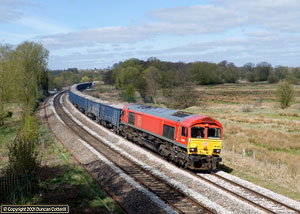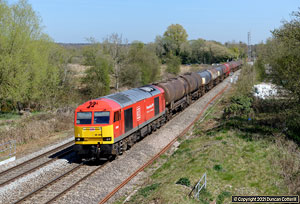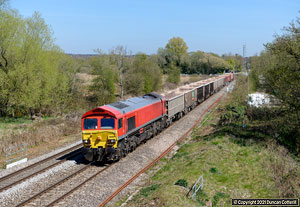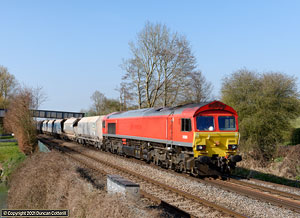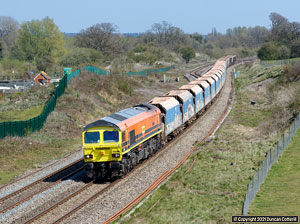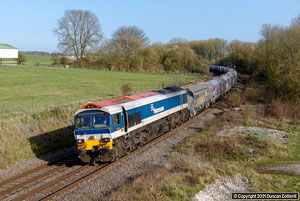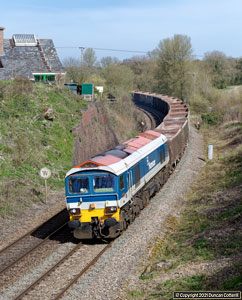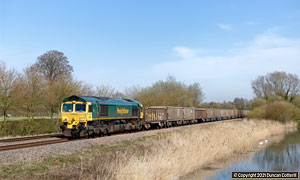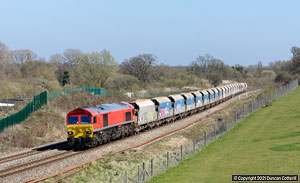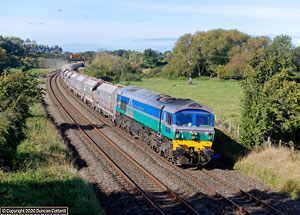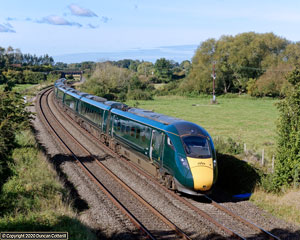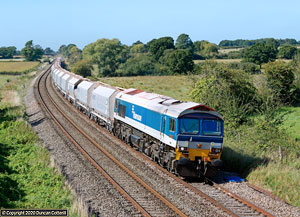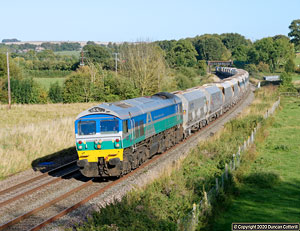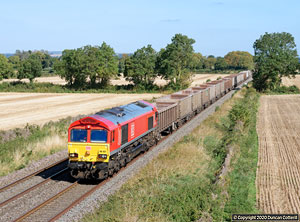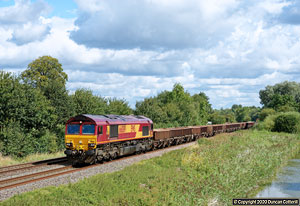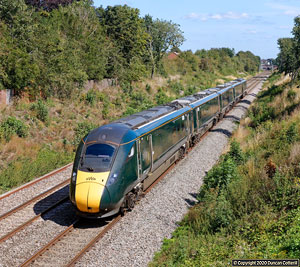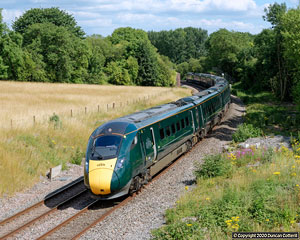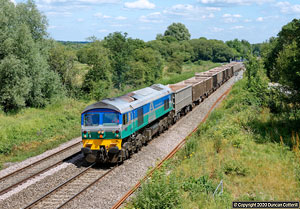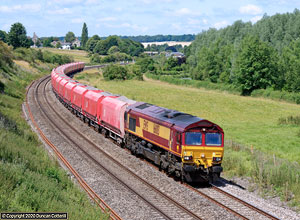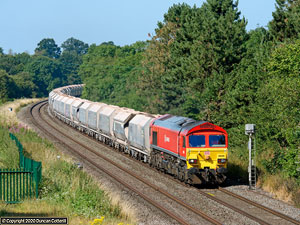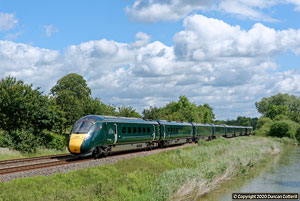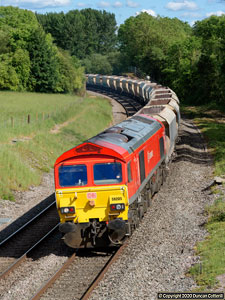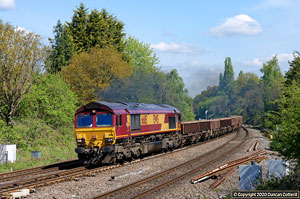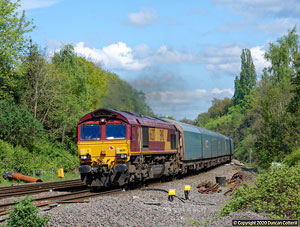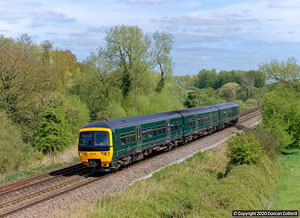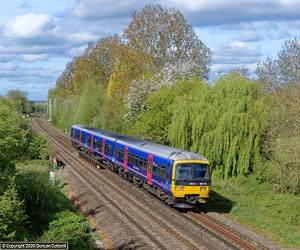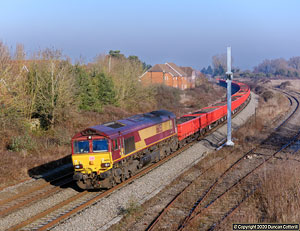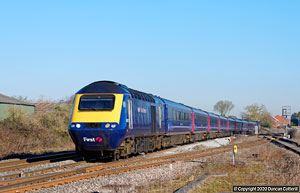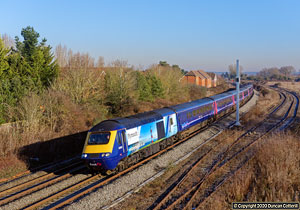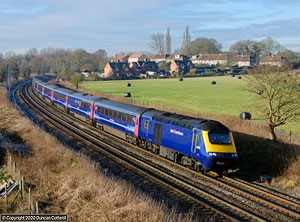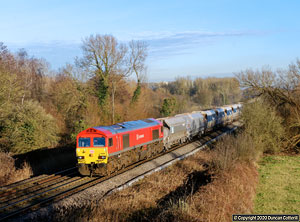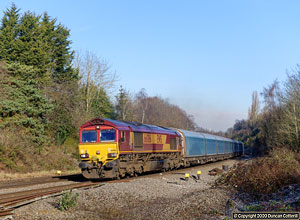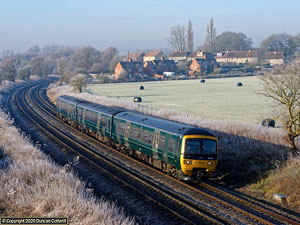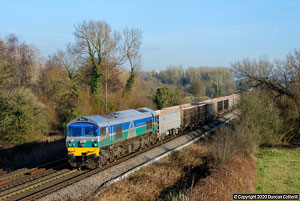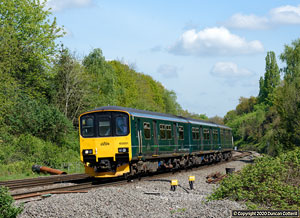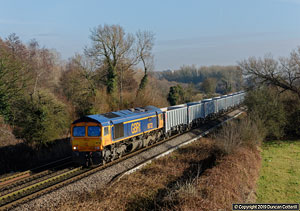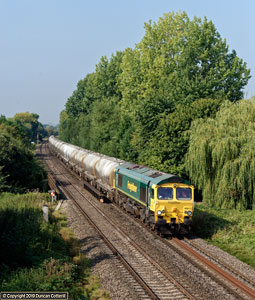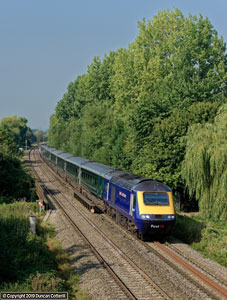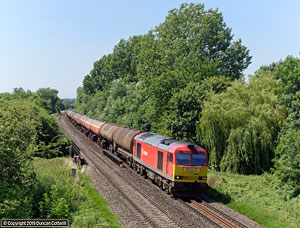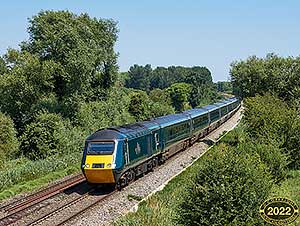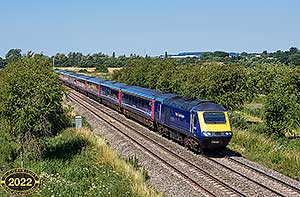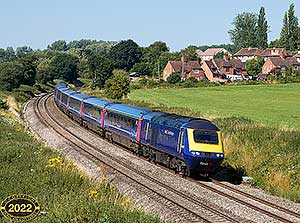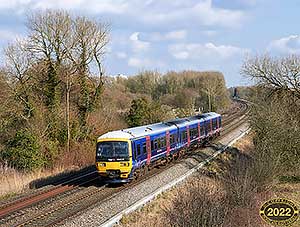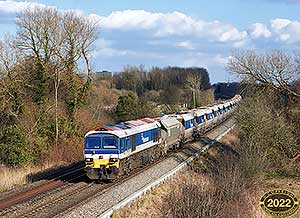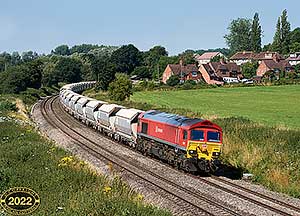The scenic Berks and Hants line is part of the most direct route from London to Taunton and beyond. It handles expresses from London to the West of England and local trains as far as Bedwyn but the main interest is the heavy aggregates traffic from the Mendip quarries to the London area.
The Berks and Hants Railway was built in the late 1840s by the GWR and consisted of 2 branches, one connecting Reading with Newbury and Hungerford and the other linking Reading and Basingstoke. The Hungerford line was extended to Devizes in 1862. A connection from Patney, 5 miles east of Devizes to Westbury, 60 miles from Reading, was completed in 1900. This allowed through running to Weymouth, at the time an important seaport and where the GWR was in competition with the LSWR for London traffic. The completion of a cut-off from Castle Cary to Cogload Junction, north of Taunton in 1906 completed the through route to the west, reducing the distance between London and Taunton by over 20 miles.
Today the Berks and Hants line is usually taken to mean the whole route from Reading to Westbury via Newbury and Hungerford, which is entirely in Berkshire to a point just west of Hungerford, then Wiltshire the rest of the way. The Hants in the name only applies to the southern section of the Basingstoke branch, which runs into Hampshire but is generally not considered part of the Berks and Hants these days.
From Reading the line runs through pleasant countryside, interspersed with a succession of small towns and villages, for 17 miles to Newbury, the largest town on the route. The section from Reading to Newbury was electrified a few years ago, with electric passenger services commencing in 2019.
The next 13 miles to Bedwyn are more rural, with only the village of Kintbury and the market town of Hungerford passed en-route. Bedwyn is the limit of the local passenger service from Newbury, which used to be a through service from London until recently but is now just an hourly Newbury - Bedwyn Class 165 DMU shuttle.
From Bedwyn the countryside becomes very rural , only passing through one settlement of any size before Westbury. After an easy run up the Kennett and Dun Valleys to Bedwyn, 30 miles from Reading, the gradient steepens for the 4 mile climb to Savernake, the summit of the line. Steepened is a relative term as the ruling gradient is only a short stretch at 1 in 100. The curvature is more of a hindrance to trains today, with several fairly sharp curves between Bedwyn and the summit.
Once over the summit, it's downhill for most of the next 18 miles to Lavington, passing through Pewsey after 5 miles, the only station between Bedwyn and Westbury these days. Downhill for westbounds is uphill if you're heading east. Again the gradient isn't very steep with a ruling gradient of 1 in 132 and most of the grade at 1 in 200 or less. That's enough to slow heavily loaded eastbound stone trains to a crawl for mile after mile as they grind up the hill. Fortunately there's a loop halfway up at Woodborough where eastbound freights can get out of the way of much faster passenger trains. Around a mile past Lavington the gradient levels out and the last 8 miles or so to Westbury are fairly level.
The east end of the line is quite busy with all stations and semi-fast passenger services east of Newbury, once worked by Class 165 and 166 DMUs but now the preserve of class 387 EMUs. West of Bedwyn, where the shuttles terminate, there are only the through services between London and the west, worked by Class 800 or 802 bi-mode units since they replaced the HSTs in 2019. There are trains to Penzance around hourly, many of which are non-stop between Reading and Taunton, and approximately 2-hourly services typically terminating at Plymouth or Paignton. Many of these services stop at Pewsey and/or Newbury.
Freight traffic can be heavy with around 8 trains each way between 9 in the morning and 6 in the evening on a typical weekday. Almost all of them will be loaded or empty stone trains, running between the Mendip quarries and numerous unloading points around London and the south-east. Such is the demand for stone that it can't be satisfied by Whatley and Merehead alone and trains also run from the quarries at Tytherington, north of Bristol, and even Moreton-on-Lugg, north of Hereford, via the B&H to the London area. The stone trains from Merehead and Whatley are often hauled by Class 59 diesels but since Freightliner took over the contract it's become less easy to predict which trains will be worked by the 59s. Class 66s can turn up on almost anything these days.
Class 60s are regular visitors to the line with DBC locos working the oil trains to and from Theale and DCR locos use the line to reach Westbury, Bristol or South Wales.
Today the Berks and Hants line is usually taken to mean the whole route from Reading to Westbury via Newbury and Hungerford, which is entirely in Berkshire to a point just west of Hungerford, then Wiltshire the rest of the way. The Hants in the name only applies to the southern section of the Basingstoke branch, which runs into Hampshire but is generally not considered part of the Berks and Hants these days.
From Reading the line runs through pleasant countryside, interspersed with a succession of small towns and villages, for 17 miles to Newbury, the largest town on the route. The section from Reading to Newbury was electrified a few years ago, with electric passenger services commencing in 2019.
The next 13 miles to Bedwyn are more rural, with only the village of Kintbury and the market town of Hungerford passed en-route. Bedwyn is the limit of the local passenger service from Newbury, which used to be a through service from London until recently but is now just an hourly Newbury - Bedwyn Class 165 DMU shuttle.
From Bedwyn the countryside becomes very rural , only passing through one settlement of any size before Westbury. After an easy run up the Kennett and Dun Valleys to Bedwyn, 30 miles from Reading, the gradient steepens for the 4 mile climb to Savernake, the summit of the line. Steepened is a relative term as the ruling gradient is only a short stretch at 1 in 100. The curvature is more of a hindrance to trains today, with several fairly sharp curves between Bedwyn and the summit.
Once over the summit, it's downhill for most of the next 18 miles to Lavington, passing through Pewsey after 5 miles, the only station between Bedwyn and Westbury these days. Downhill for westbounds is uphill if you're heading east. Again the gradient isn't very steep with a ruling gradient of 1 in 132 and most of the grade at 1 in 200 or less. That's enough to slow heavily loaded eastbound stone trains to a crawl for mile after mile as they grind up the hill. Fortunately there's a loop halfway up at Woodborough where eastbound freights can get out of the way of much faster passenger trains. Around a mile past Lavington the gradient levels out and the last 8 miles or so to Westbury are fairly level.
The east end of the line is quite busy with all stations and semi-fast passenger services east of Newbury, once worked by Class 165 and 166 DMUs but now the preserve of class 387 EMUs. West of Bedwyn, where the shuttles terminate, there are only the through services between London and the west, worked by Class 800 or 802 bi-mode units since they replaced the HSTs in 2019. There are trains to Penzance around hourly, many of which are non-stop between Reading and Taunton, and approximately 2-hourly services typically terminating at Plymouth or Paignton. Many of these services stop at Pewsey and/or Newbury.
Freight traffic can be heavy with around 8 trains each way between 9 in the morning and 6 in the evening on a typical weekday. Almost all of them will be loaded or empty stone trains, running between the Mendip quarries and numerous unloading points around London and the south-east. Such is the demand for stone that it can't be satisfied by Whatley and Merehead alone and trains also run from the quarries at Tytherington, north of Bristol, and even Moreton-on-Lugg, north of Hereford, via the B&H to the London area. The stone trains from Merehead and Whatley are often hauled by Class 59 diesels but since Freightliner took over the contract it's become less easy to predict which trains will be worked by the 59s. Class 66s can turn up on almost anything these days.
Class 60s are regular visitors to the line with DBC locos working the oil trains to and from Theale and DCR locos use the line to reach Westbury, Bristol or South Wales.




 options
options hide options panel
hide options panel